Solitary confinement: New York bans prison isolation over 15 days
- Published
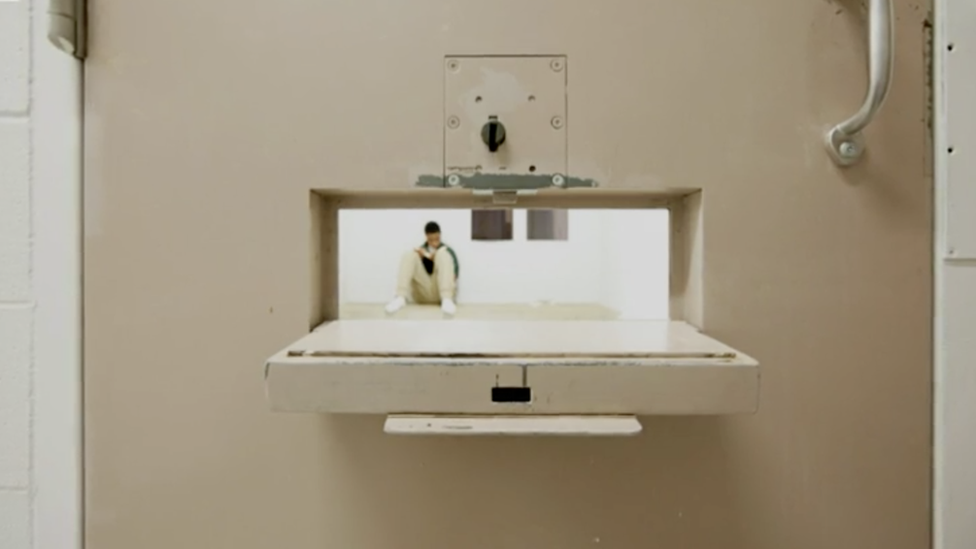
New York has adopted a law banning more than 15 days in solitary confinement, and is set to become one of the first US states to fall in line with the UN's Mandela Rules, which define extended solitary as torture.
Imagine if you had to spend years alone in a tiny cell within earshot of others screaming in mental anguish? That is what solitary confinement is like in many US detention facilities that don't limit the use of isolation.
Candie Hailey, a mother two, has lived through this.
She was sent to Rikers Island Jail in New York in 2012, accused of attempted murder. The charge was later dropped.
"I walked right into hell" says Ms Hailey. "The cell was like an elevator you are stuck in for 24 hours."
In Rikers, she says she was accused by guards of minor infractions of the jail rules, and ended up being kept in an isolation cell for three years. Ms Hailey, whose wrists are deeply scarred, became suicidal.
"All you're thinking about is trying to kill yourself. I swallowed pills. I cut my arms," she says.
The numbers in solitary in America, estimated at over 60,000 before the pandemic, have exploded due to Covid as many prisons have confined inmates to their cells.
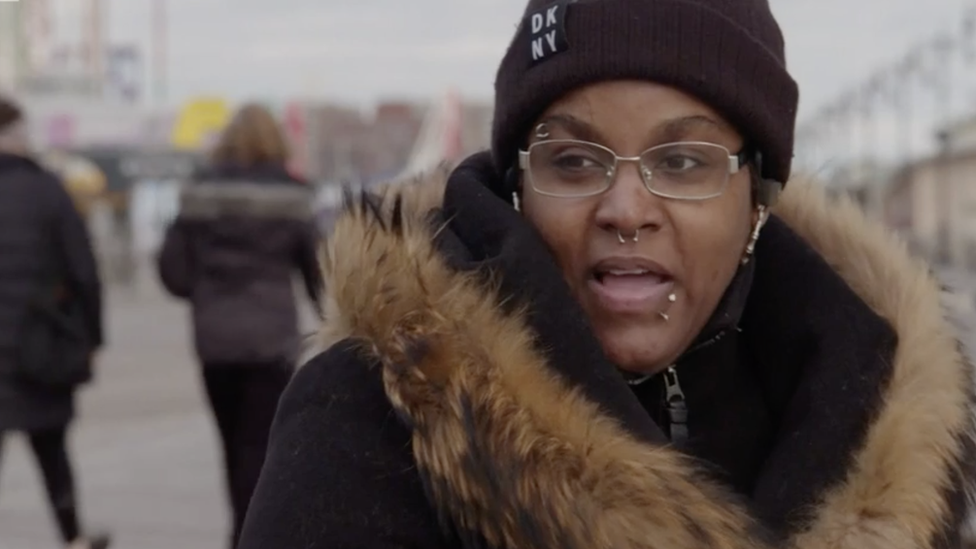
Candie Hailey spent years in solitary
Solitary confinement - or segregation as it is officially known - was designed to separate the most dangerous prisoners from others and to keep vulnerable prisoners safe on a temporary basis.
But in America, solitary is used more widely, and not just for Covid quarantine.
Inmates who have committed minor rule violations, many of whom are mentally ill, are often also put in isolation cells, sometimes at length.
Solitary confinement, which was condemned as a dangerous practice in the 1890s in the US, was reintroduced on a large scale after the murder of two prison officers by inmates in Marion, Illinois in 1983, with the advent of "Supermax" prisons, and with the introduction of Secure Housing Units - units where prisoners are segregated.
"Solitary confinement is utilised for tens of thousands of people for years at a time" says Homer Venters, former Chief Medical Officer for the New York City jail system.
This, in spite of strong medical evidence that solitary confinement can cause severe psychological distress.
"I have had many patients who very quickly develop problems with auditory hallucinations, or even visual hallucinations", says Mr Venters.
"It's because all the elements of humanity - the ability to talk to people, the ability to interact with people, the ability to know what time it is - are being stripped away," he says.
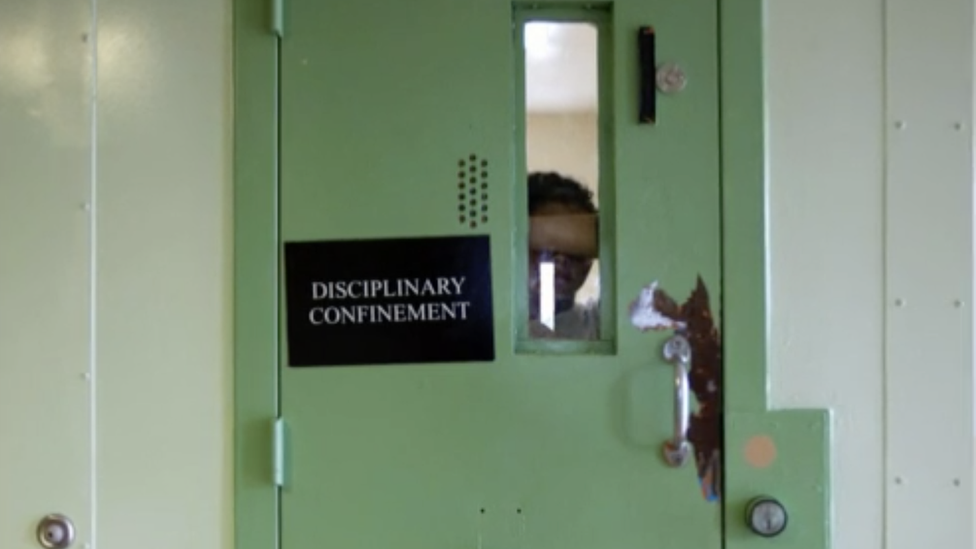
Billy Blake, a convicted murderer, has been housed in a small cell on his own for 34 years in prisons in upstate New York. He said inmates regularly throw excrement, bang on their doors or scream all night.
He says he has had to consciously stop himself from losing his mind.
"I've seen mentally ill people rock back-and-forth, back-and-forth. I've started rocking - and then I've caught myself. This is what crazy people do," he says.
"Next thing you know, they're playing with faeces or urinating on the floor. I didn't want that to happen to me."
It is the prison administrators and not the courts in the US that decide if a prisoner is sent to solitary, and for how long. In many cases this can be the difference between sanity or insanity - or even between life and death.
Studies suggest that those held in solitary are six times more likely than other inmates to kill themselves, and that even a year after release they are at a higher risk of suicide.
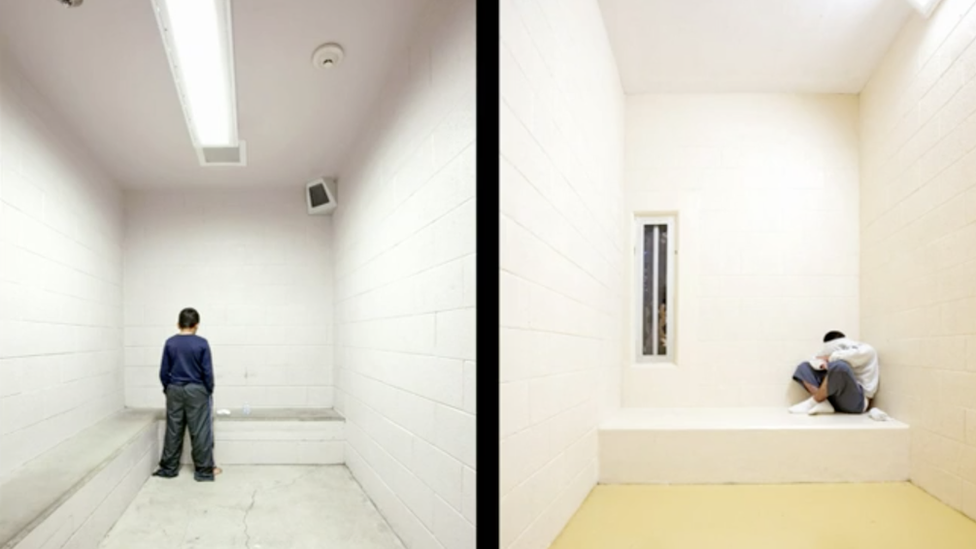
Six years after her release from solitary, Candie Hailey, who also alleges she was raped in solitary, has been diagnosed with severe depression and post traumatic stress disorder. She still wants to kill herself.
"If I commit suicide it is because of solitary," she says.
Abuse by guards in solitary confinement is common in solitary, according to inmate accounts and to those who have worked on solitary units.
Rikers Island jail would not comment on Ms Hailey's case.
If solitary confinement can destroy her, a previously functioning and mentally healthy adult, what does it do to children?
Solan Peterson, a 13-year-old boy, with attention deficit hyperactivity disorder [ADHD], set fire to a rubbish bin at school near Shreveport, Louisiana one Friday in February 2019. He was taken to a juvenile detention centre and, after misbehaving there, was put in a solitary cell.
His father, Ronnie Peterson, was allowed to see him a few days later.
"I could talk to him through a little bitty four-inch window", said Mr Peterson.
"You could tell it was kind of breaking him down, being by himself. He had been punching the wall and his knuckles I remember were a little bit bruised."

Solan Peterson
Mr Peterson was told Solan would soon be released, but after five nights in solitary, the boy was still in his cell.
"I got a phone call at two o'clock in the morning saying that he was dead", says his father.
Solan had hanged himself at the age of 13.
"You kind of go numb," says Mr Peterson. "We had no inkling that he was ever going to hurt himself. I mean he was a normal teenage boy."
Solitary confinement for juvenile offenders has been banned in federal prisons in the US but in many state and local facilities - including juvenile detention centres - isolation is routinely used.
Solan's grave stands near Shreveport, with his ice hockey stick planted in the ground next to it.
Changes to the use of solitary confinement are coming slowly across America and efforts at reform face strong opposition.
New York's new law will not take effect for a year, and Governor Andrew Cuomo has signalled his intent to negotiate changes to it.
New York City has banned solitary in adult facilities for inmates under the age of 22, a measure now set to be adopted state wide. The new law also bans solitary confinement entirely for several groups, including minors and people with certain disabilities.
But city corrections officers oppose the reforms, and call them reckless.
"It's only spiked the violence in the jails," says Benny Boscio, president of New York's Corrections Officers Benevolent Association.
"We are given a bad rap that we are monsters abusing inmates," he says. "But what do we do with the inmate that cuts another across his face, that disfigures a corrections officers ?"
Mr Venters says there are alternatives to confining an inmate to a cell for 23 hours a day.
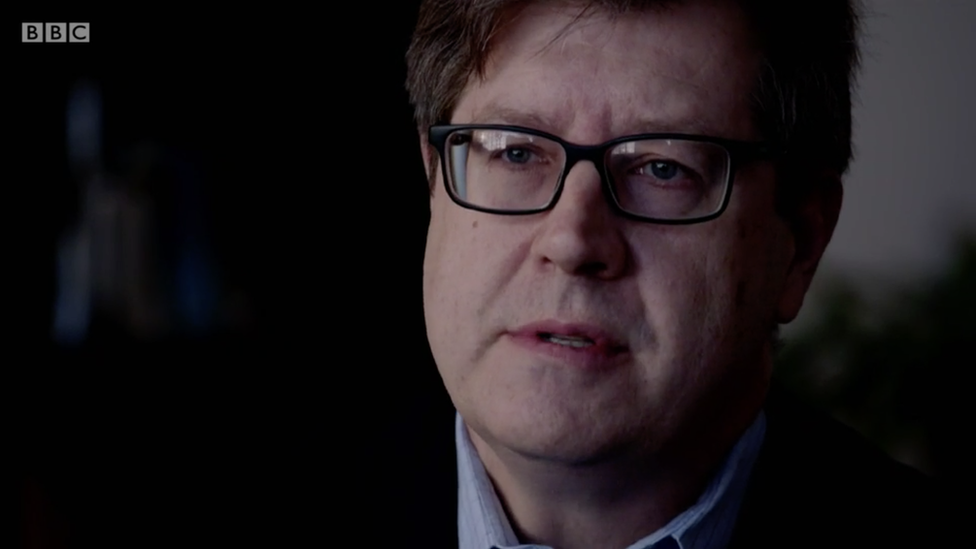
Homer Venters, the former Chief Medical Officer for the New York City Jail System
"I've been in many prison settings where people come out of their cells for several hours a day. They may engage in programming and even interaction with others. But it's in a way that's secure."
Back in upstate New York, Billy Blake has recently heard some life changing news. After 34 years in solitary he is to be allowed out to live with other prisoners.
"I feel almost like in going home!" he laughed loudly as he related the news on the crackly line from his cell. "It feels like I am returning to the human race! I'm mad excited! I'm smiling all day".
Billy will soon be living with others but many thousands of inmates in America face years more alone in their cells, trying to hold on to their sanity.
Related topics
- Published10 June 2015
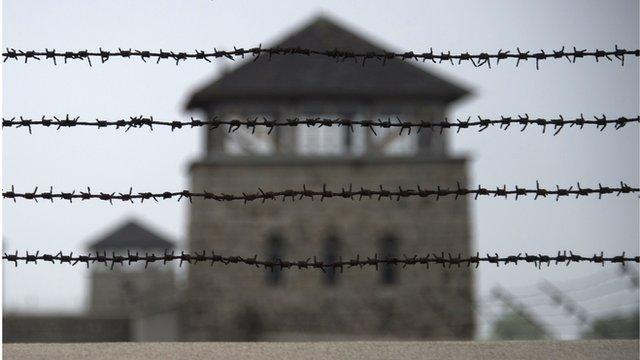
- Published30 December 2019
